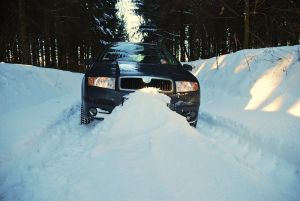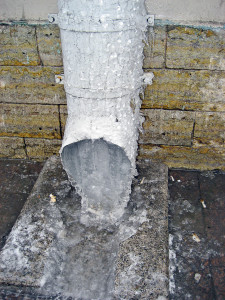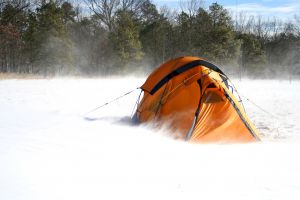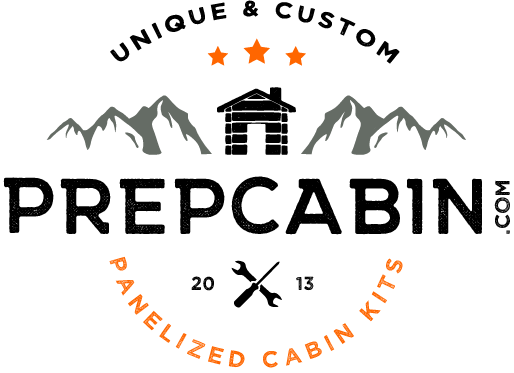This year has seen some early winter weather that in some parts of the country has been fairly severe.
Winter storm Atlas already moved through Wyoming, South Dakota and a few neighboring states. In some areas it dumped over 2 feet of snow on unprepared people. I was surprised when I saw the reports on the news that part of our country was expecting a major blizzard in the first week of October, my wife thought I was pulling her leg until I showed her the news.

The ranchers in the region were hurt badly with loss of cattle being reported in the thousands to tens of thousands from different sources.
This storm came through in early October before the cattle had grown out their insulating coat of fur that helps them survive the often-brutal winters of that region.
The pictures of flooded and frozen dead cattle are bone chilling!
I couldn’t find any data on whether any human lives were lost due to winter storm Atlas but the loss of human life is common with winter storms.
Here are 3 important things should you do to prepare for this coming winter:
1. Maintain and prepare your vehicle.

A common cause of loss of life during the winter is being caught in a storm in your vehicle. It’s easy to feel safe sitting inside your car, truck or SUV when you have the heater turned up but outside the conditions could kill you within hours or even minutes.
This is a good time to take your car to the shop for routine maintenance. Check the fluids, hoses and belts for wear and replace anything that’s worn or damaged. Just because it’s working doesn’t mean it’ll stay that way. Have your anti-freeze checked because it does loose its effectiveness over time.
Your windshield wiper blades should be swapped out for winter ones and the fluid changed to one made for winter use which will help remove snow and ice.
Also check your tires and make sure they have good tread to get you safely through the winter. A good pair of winter tires could be a lifesaver if caught in back weather. And the proper tires and good tread help you from hydroplaning and loosing control in the rain and slush.
During bad winter weather it’s also recommended that you keep a pretty full tank of gas. If you get stranded or you’re route is cut off you may be on the road longer than you anticipate. Stop and top off your tank!
Don’t forget to clear off all your windows from snow and ice. Visibility is crucial when driving in winter weather.
Also make a survival gear kit to keep in your vehicle. Here are some things you should have in your car to survive a winter storm:
This traction aid is a great addition to the trunk of your car in the winter:
2. Prepare your home and family

It’s important that you’re home is prepared for winter weather as well as your car. A blizzard or winter storm can leave you stranded at home without power or a way to get more supplies.
FEMA and other emergency groups recommend that you keep 72 hours of supplies on hand. As a prepper that understands how long it takes to resupply stores in a disaster situation I recommend 3 weeks worth of food and water, not just 3 days.
To make sure you aren’t missing any crucial supplies for your home make a list with all the necessities you’d need if you’re trapped inside.
Also make sure your emergency and “lights out” kit are ready for any winter emergency. Check your batteries, flashlights, candles and other things you’d need if the power is out for days at a time. And don’t forget your emergency radio!
Most homes have plenty of blankets and warm clothes but if you’re light in that area I’d stock up on blankets and some thermal clothing.
One thing many homeowners don’t keep on hand until an emergency is plumbing repair supplies. Freezing is responsible for many broken pipes leaving people without running water during major storms. Leaving your faucets dripping during the coldest times can usually prevent busted plumbing.
To prevent the loss of running water and frozen pipes check out these heated pipe cables I’ve installed on my pipes after years of cold winter plumbing repairs. No more busted pipes at my house!
And don’t forget your drain lines and outside spigots, they’ll freeze up as well.
3. Learn how to survive outside in the cold.

If you’re caught outside your vehicle or home during a winter storm it’s extremely dangerous and you should know how to survive one of those situations.
The first rule to surviving out in the cold is to not be caught off guard. And the proper winter clothing is a must when venturing out in the winter.
Dressing in layers is a tactic that saves many lives in the winter. You don’t want to sweat during the day because when it turns colder at night your wet clothing looses it’s insulative abilities. By dressing in layers you can adjust your clothing to keep your body the proper temperature.
Don’t get wet if you don’t have a warm shelter to get to immediately! Getting wet is a sure route to hypothermia when exposed to the cold. Being dry is your best friend during a winter storm.
Proper shelter building is skill you should definitely learn and practice. A simple ice cave or lean to shelter can help you stay warm and dry in the great outdoors.
For 10 crucial points about building a natural shelter see this article from my friends over at Survival Life: 10 Critical Things About Building A Shelter
Just remember if you’re venturing out into the cold carry the gear that will save your life. You’ll need emergency food, water, fire, signaling devices and tools to build a shelter.
We’ll get more in-depth about winter survival as the winter progresses. Hypothermia kills an average of 1,300 people a year in the United States and many of those are because of poor preparation.
What are you doing to prepare for this winter? Join the discussion below and help save some lives this winter!
